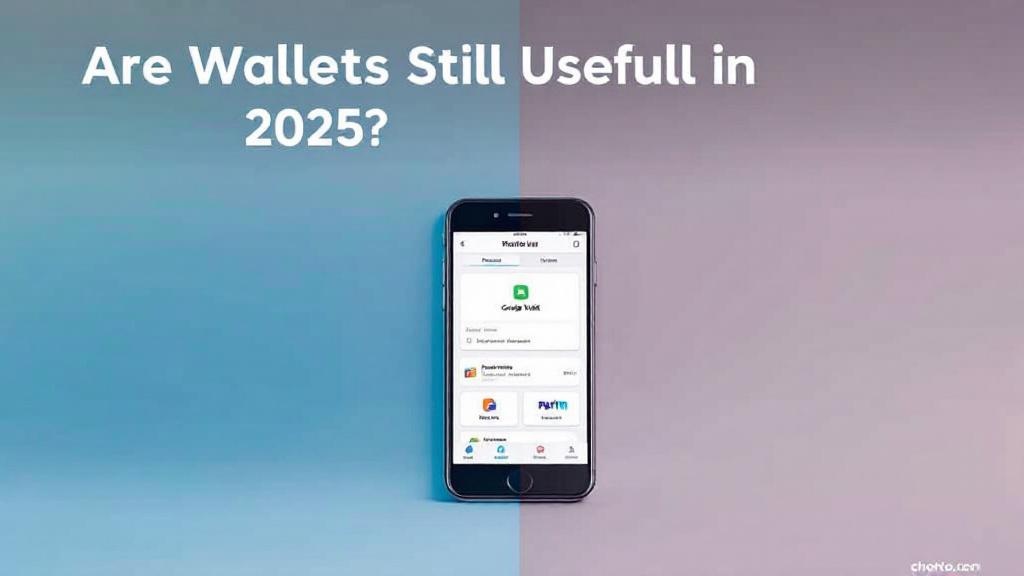In the rapidly evolving world of digital payments, the traditional wallet has long been considered an essential item. From cash and coins to cards and receipts, wallets have carried much more than just currency. But as digital payment methods, especially UPI (Unified Payments Interface), continue to grow in popularity, many are beginning to question: Are wallets still useful in 2025?
With the rise of smartphones, digital wallets, and tap-to-pay options, the question of whether people still need physical wallets seems more relevant than ever. Are traditional wallets outdated? What are the modern alternatives to wallets, and why do some people still carry them? In this article, we’ll dive deep into these questions, exploring wallet usage trends, the shift to digital solutions, and whether physical wallets still have a place in today’s tech-driven world.
Are Wallets Still Useful in 2025? The Rise of UPI and Digital Wallets
UPI has revolutionized how we handle payments. Launched in 2016 by the National Payments Corporation of India (NPCI), UPI has become a household name. With its simplicity, speed, and wide acceptance, UPI has rapidly gained traction among users of all demographics. But the question remains: Can UPI fully replace physical wallets?
What Replaces a Wallet in the Age of UPI?
UPI’s influence has paved the way for digital wallets like Google Pay, Paytm, PhonePe, and more. These apps allow users to store money, link their bank accounts, make payments, and even transfer funds instantly, all from their smartphones. With UPI-integrated apps, physical wallets may feel like an old-school accessory.
Moreover, digital wallets are now being incorporated into smartphones as part of the ecosystem. Many modern smartphones come equipped with digital wallet features, such as Apple Pay or Google Wallet, where users can store everything from credit cards and debit cards to loyalty cards, identification, and more.
Key Features of Digital Wallets:
Convenience: Make payments and transfers directly from your phone.
Security: Digital wallets use encryption and biometrics to safeguard financial information.
Cashless transactions: A cash-free society is becoming more realistic with digital wallets and UPI.
The rise of contactless payments has also played a significant role in the decline of traditional wallet usage. People can now “tap to pay” with their smartphones or cards, providing an efficient, secure, and contactless way to shop, dine, or commute.
Digital Wallets vs Physical Wallets: The Showdown
Digital Wallets: The New Normal
For those who prefer a clutter-free experience, digital wallets offer a world of benefits. With the ability to carry all your payment methods, loyalty cards, and even digital ID cards in one place, smartphones have become an all-in-one solution for personal finance management.
Advantages of Digital Wallets:
Convenience: No need to carry cash or multiple cards.
Instant Transactions: Quick, real-time payments with no delays.
Multiple Payment Methods: Use debit cards, credit cards, bank transfers, and even cryptocurrency through apps.
Security: Digital wallets use multi-factor authentication and biometric protection (fingerprint or face recognition), ensuring your finances stay safe.
In addition, the integration of digital ID cards in many wallets helps replace the need for a physical ID or driver’s license, streamlining your everyday transactions even more.
Physical Wallets: Do People Still Use Them?
Despite the growing popularity of digital payments, physical wallets continue to hold significance for many people. Why? There are several reasons why people still carry wallets:
Physical Currency: In rural areas or certain regions, cash transactions remain popular due to limited internet access.
Emotional Attachment: Some individuals find comfort in having their credit and identification cards physically with them.
Personal Habits: For years, carrying a wallet has been a cultural norm that many are reluctant to give up.
Physical Wallets vs Smartphones: Which Is More Secure?
When it comes to security, traditional wallets and smartphones both offer different advantages:
Physical Wallets: They do not require battery life or internet connectivity. However, they are more vulnerable to theft, and if lost, the contents are difficult to retrieve.
Smartphones: While smartphones provide advanced security features like RFID blocking and encrypted payment methods, they are dependent on battery life and are susceptible to cyber threats such as hacking or malware attacks. However, many phone manufacturers are adding security layers to digital wallets, making them a trusted alternative.
Why Do People Still Carry Wallets?
Though digital wallets are on the rise, people still rely on their physical wallets for various reasons. Some argue that a physical wallet is an essential item for specific purposes, such as:
Emergency Cash: Not all establishments accept digital payments, particularly in rural areas.
Insurance and Loyalty Cards: While digital alternatives exist, many people still carry important documents in their wallets for easy access.
Backup for Device Failure: Smartphones can fail, and not everyone feels comfortable relying solely on a digital wallet for everything.
Importance of Wallets Today: Are Traditional Wallets Outdated?
While smartphones and digital wallets have made a significant impact, traditional wallets are not entirely obsolete. They still hold relevance in specific contexts, especially in regions with lower digital penetration or among individuals who are less familiar with technology.
Key Advantages of Physical Wallets:
Offline Functionality: No need for an internet connection or power.
Familiarity: Many people still feel more comfortable carrying a physical wallet, especially older generations.
Backup: Acts as a safety net if your smartphone is lost or damaged.
Wallet Usage Trends in 2025: What Does the Future Hold?
As we approach 2025, the world of personal finance will likely continue its trend toward digitalization. With the rise of mobile-first payment solutions and the integration of smart devices like watches and even rings that facilitate payments, we may see a further decline in the need for traditional wallets.
Statistics to Watch in 2025:
The adoption of e-wallets is expected to increase by over 30% globally.
Over 70% of smartphone users will have contactless payment functionality enabled.
The trend of tap-to-pay systems will expand, especially in developing nations where banking infrastructure is limited.
FAQ: Addressing Common Concerns About Wallets in 2025
1. Are Wallets Necessary in 2025?
While digital wallets are taking over, physical wallets still provide value in certain situations, particularly when you need physical IDs, cash, or backup payment options.
2. Why Do People Still Carry Wallets?
Some people continue carrying wallets due to habit, familiarity, or the need for backup payment methods, such as cash or physical cards, in situations where digital payments are unavailable.
3. What Replaces a Wallet?
With digital wallets, smartphones, and smartwatches, many consumers are transitioning away from traditional wallets in favor of more convenient, tech-driven solutions.
4. Is a Digital Wallet More Secure Than a Physical Wallet?
Digital wallets offer advanced security features like encryption, biometrics, and RFID blocking, while physical wallets remain more vulnerable to theft or loss.
5. Are Traditional Wallets Outdated?
While traditional wallets are less commonly used, they still serve a purpose for those who prefer tangible financial management or who live in areas with limited access to digital infrastructure.
6. How Do Digital Wallets Help in Financial Security?
Digital wallets use multi-layered security protocols, such as PIN protection and biometric verification, ensuring that your financial transactions remain secure from cyber threats.
7. Do Digital Wallets Replace All the Functions of a Physical Wallet?
While digital wallets can replace many of the functions of a physical wallet, such as storing payment methods and IDs, there are still instances where people prefer having physical cards or cash on hand.
Conclusion: Are Wallets Still Useful?
In the age of UPI and digital wallets, the question “Are wallets still useful?” is more complicated than a simple yes or no. Physical wallets may be outdated for some, but they are not entirely irrelevant. Digital wallets offer convenience, security, and speed, making them the preferred choice for many. However, physical wallets continue to hold value for certain users, particularly those who prioritize offline functionality and emotional attachment.
As we move further into the digital age, it’s clear that wallets—whether physical or digital—are adapting to the needs of the times. In 2025 and beyond, we may see a hybrid model emerge, where digital wallets and traditional wallets coexist, catering to diverse needs and preferences.
Ultimately, whether you prefer to carry a physical wallet or use a digital wallet depends on your lifestyle, habits, and security preferences. What’s clear is that wallets are not entirely obsolete—they are simply evolving to meet the needs of today’s modern consumer.








Comments (0)